How to defeat Napoleon. The Recalcitrant Danube, Aspern and Essling, 21-22 May 1809
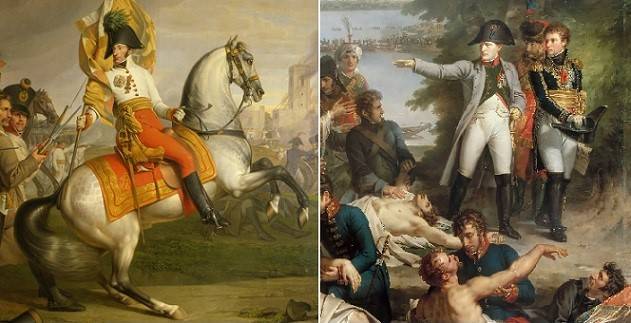
Errors and miscalculations
Contrary to the established traditions, the analysis of one of the most painful defeats of Napoleon should start right away from his reasons. If only because under Aspern and Essling the main role was played by no means objective factors. The failure of the first year in the company 1809 battle on the left bank of the Danube is primarily Napoleon's fault.
However, it was in the battle of Aspern and Essling that the French emperor was perhaps the most worthy opponent - the Archduke Charles, one of the numerous brothers of the Austrian emperor Franz. He defeated the French more than once, but he was defeated by Napoleon in a five-day series of battles in the vicinity of Regensburg.
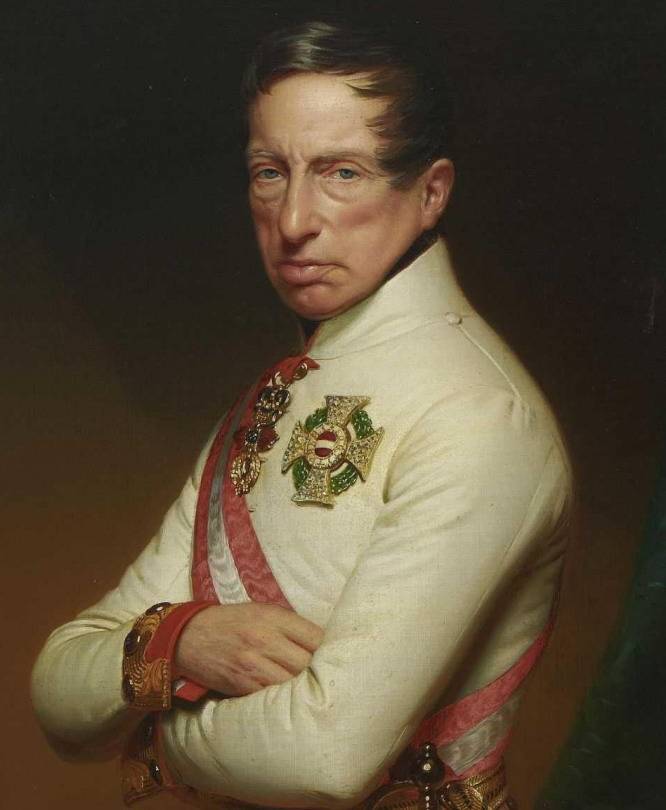
Narrating about Aspern, the Bonapartists love to refer to the fact that the Danube suddenly turned into an insurmountable tumultuous stream, as if forgetting how skillfully the Austrians took advantage of this. Napoleon's fans also complain that it was very difficult for the attacking French to navigate unfamiliar terrain, although this is almost inevitable for the attacking side.
Practically never again did a great commander, who invariably did everything to ensure that all his forces were in a fist, did not scatter entire corps and divisions. Having managed to assemble for the start of the company in Bavaria, along with three French corps and guards, another four and a half corps of the allies, Napoleon brought only two corps to the Austrian capital to cross the Danube. Even with the guards and cavalry, this was clearly not enough for a decisive victory.
Of course, there were objective reasons for this. Stretched communications, which in the first place could threaten to dissolve in the mountains of Bohemia, the army of the Archduke Charles. The premature allocation of the strongest 3 corps of Marshal Davout to the northern coast led to serious consequences. Instead of putting pressure on Karl's army, Davout actually released it for the fight with the main forces of Napoleon.
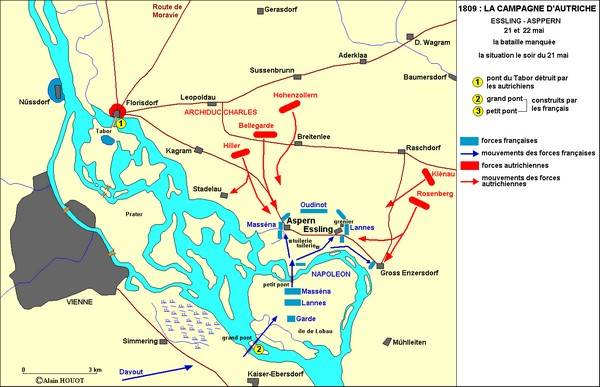
Napoleon, of course, also counted on the approach of Viceroy Eugene’s army from Northern Italy, which was almost twice as strong as the opposing forces of Archduke John. Finally, the emperor obviously let down the inability to force the Danube directly in Vienna. The Austrians blew up all the bridges in the capital and firmly held them under the gun of powerful batteries. Such a ferry could well have cost Napoleon all his magnificent sappers and engineers.
And finally, almost nude rear, completely hostile, unlike 1805 of the year, and also overwhelmed with guerrilla groups and saboteurs. Only three years later, already in Russia, Napoleon had to allocate the same large forces to protect communications, bases and shops.
As a result, more than 40 thousands of Davou went somewhere in Bohemia, and even returning to the south bank of the Danube, remained too far from the main forces. 22 thousands of Bavarians under the leadership of Lefebvre as part of the 7 Corps remained in the vicinity of Salzburg, where they observed Jelacic and Archduke Johann. And he actually had to pursue the troops of the Viceroy Eugene. Finally, two more corps - 9-th Saxon and 8-th Wurttemberg, having about 35 thousands, on the River Traun covered the left flank from General Kolovrat, who had no more than 22 thousands of people.
Crossing
The dispersion of forces among the French is all the more surprising since after five days of fighting in Bavaria, Napoleon managed to take a position between the Austrian army and Vienna. It is impossible not to pay tribute to the commander-in-chief of the Austrians, who then managed to withdraw his army from Bohemia towards Napoleon. Peace, however, was not offered to Napoleon in Vienna. Victory had to be sought on the north bank of the Danube.
The option of crossing the river upstream from Vienna, at Nusdorf, Napoleon and his chief of staff, Berthier, was rejected right away, as there was a very fast current, and strong Austrian batteries also settled on the dominant heights. In addition, the maneuver to Nusdorf threatened to lose control over the capital and the surrounding area. There remained only a rather complicated narrowing of the Danube south of Vienna, on the island of Lobau, where it was planned to deliver the necessary pontoons for the crossing.
Moving at some distance along the north bank of the Danube to remain inconspicuous, the army of the Archduke Charles had reached the heights of Marfeld by May 16, an area north of Lobau. It seems that this was a surprise for the French. Napoleon could hardly believe that under the pressure of Davu's 40-thousand corps, the archduke would decide to join up with Johann's troops coming from Italy. If Johann managed to unite with Linz with the Kolovrat corps, he would generally lead to Vienna to 60 thousands of troops, and quite fresh ones.
And this is in addition to the 100 with the odd thousands right next to the Archduke Charles. With such forces it is no longer terrible to fight against Napoleon himself. However, the Archduke Johann failed to unite with Kolovrat, having stumbled upon the barriers put up by Napoleon, and this suggests that the spread of forces for the French was not at all superfluous. However, the Austrian commander-in-chief was able to use the Kolovrat troops to communicate with Lower Austria and Tyrol, in effect forcing Napoleon to also keep considerable forces there.
Positions on the Bizamburg heights allowed the Archduke Charles to repel the advance of the French, however, having reliable information about the clearly insufficient forces of Napoleon, he decided to attack. If Johann's army arrived in time for him, she had to take a position located practically in the rear of Napoleon, on the line of his communications, and at the highest place.
Napoleon did not wait for reinforcements and hoped to give the Archduke a battle even before the arrival of reinforcements to him. However, we repeat that the forces of the Austrians, the emperor, clearly underestimated. As early as the evening of May 18, the island of Lobau began filling the troops of Marshal Massena’s 4 Corps, covering the construction of the crossing over the northern arm of the Danube, by the very first pontoons. It took two days to build bridges - 19 and 20 in May, and as early as the morning of 21, the French began to move to the left bank.
The division of the Molitor from the corps of Massena was the first to enter Aspern, who immediately left the patrols of the Hungarian hussars, followed by the 10 battalions of the Legrand division. The right flank and the village of Essling occupied the division of Buda from Marshal Lannes's 2 Corps. But in the evening only powerful division of General Cara Saint-Cyr in the 18 battalions and 8 squadrons Cuirassier of General Saint-Germain managed to pull themselves up from Lobau Island. Napoleon was able to smuggle no more than 35 thousands of soldiers to the north coast, who could only be supported by 50 guns.
The bridge, built by the French pontoon of the most durable materials on 68 large boats and 9 huge rafts, was still held, but its carrying capacity was very low. The pontoons were breaking by the current, moreover, the Austrians had already begun to lower firefighters down the Danube - ships and boats with heavy cargo and combustible substances, which, however, could not seriously prevent the crossing.
Beginning of the End
The threat from the north turned out to be much worse. Already at three o'clock in the afternoon, thick columns of Austrians began to descend from the Bisamberg Heights - the Archduke Charles had no less than 75 thousands on hand, who were supported by nearly three hundred guns. Immediately five powerful columns - Generals Hiller, Belgard, Davidovich and Rosenberg, as well as Prince Hohenzollern, supported by the cavalry of the Prince of Liechtenstein fell on the French.
From its exalted position, the Austrian commander managed to notice in time the rash maneuver of Napoleon, who was trying to smuggle an army of many thousands over a single bridge. The Danube in May, when streams from the mountains still descend, is a very wide and fast river, which allowed only a very slow movement of all the armed forces one after another. And this - along the narrow narrow walkways, even the cavalry moved with difficulty along them, and precious hours went to the crossing of the guns.
The bridge was not suitable as a way out. Just two years before, Napoleon had brilliantly used a similar mistake of the Russians in the battle of Friedland, but this time showed amazing self-confidence. The Archduke Charles did not hesitate to take the opportunity to destroy half of the French forces on the north bank, while the rest of Napoleon’s troops, especially the artillery, were still busy crossing. Huge forces, almost 50 of thousands of French, generally hung on the south bank of the Danube.
From the Austrian commander immediately adjutants rushed to the generals Kolovrat, Nordman and others, who commanded the troops located upstream of the Danube. They were ordered to prepare new firefighters for the destruction of the bridges imposed by the French. All the morning the Archduke Karl carefully covered his main forces, ordering cavalry and outposts to resist only for the view. He was not going to smash the French avant-gardes at all or even to beat in an empty place.
The key targets for the Austrian attack were Aspern and Essling, located on the flanks of the French. Between these two fortified points were scattered numerous buildings, mostly stone, surrounded by walled gardens and hedges, where powerful Austrian batteries immediately sheltered under the cover of cavalry. In the rear of them, as a reserve, the Hohenzollern infantry was deployed - the 23 battalion, built in advance in the square.
On both flanks, fierce battles immediately flared up, as contemporaries wrote, “the rage of the attack, as well as the persistence of defense, have almost no examples in stories wars. Aspern and Essling changed hands several times. General Molitor in Aspern was supported by the division of Marjula, and by Essling Lunn managed to pull up several battalions from the division of Oudinot.
Numerous Austrian artillery literally mowed the ranks of the French as soon as their columns attempted to carry out attacks, leaving the narrow streets of Aspern and Essling. The infantry suffered so heavy losses that Napoleon ordered Marshal Bessier to launch a general cavalry attack in order to ward off the batteries from the Austrians.
The attack of the Guardian cuirassiers was, as usual, brilliant - unrestrained courage combined with the swiftness and power of these “iron men”. Liechtenstein's cavalry, for the most part - light, they simply knocked over, but the short battle gave the Austrians time to divert artillery batteries.
The blow of the speeding cavalry Bessier fell just on the square of Hohenzollern, who, despite the breakthrough of two or three squares, still managed to fight off and keep a single system. The impulse of the French cavalry soon dried up, although it was not yet necessary to say that it was defeated. Bessieres was forced to retreat, albeit in frustration, and with considerable losses.
By this time, the Austrians had once again captured Aspern. In the center, the battered Hohenzollern squares were rebuilt into columns, and they were supported by the Liechtenstein cavalry, which came to itself again. They began slowly but surely cramping the thin lines of the French riflemen, covering Bessiere’s retreat. Marshal with his guards again and again made attacks, and managed to prevent the breakthrough of the French lines.
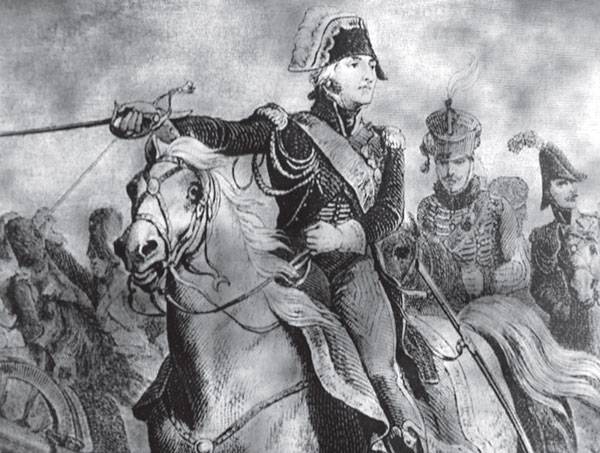
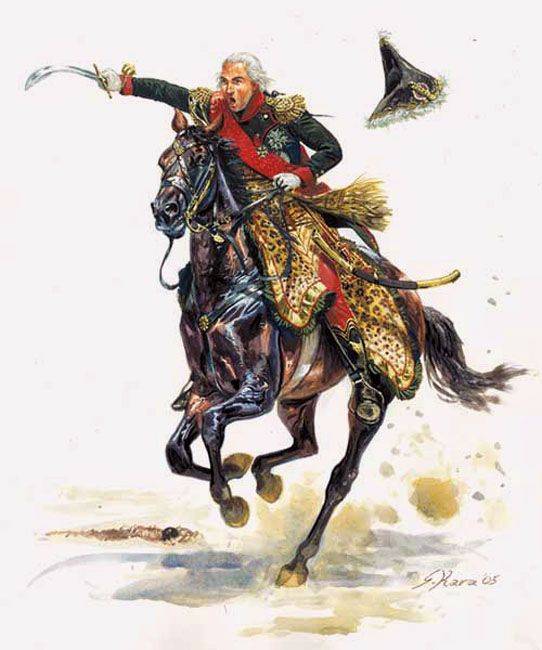
The night only briefly interrupted the fight; but all signs of a general defeat the French were there. On the left flank, the Austrians finally took Aspern and almost completed a round, threatening to attack the crossing itself. The French center, despite all the deeds of the Bessieres cuirassiers, turned out to be dropped almost to the bridges. And only Marshal Lannes, almost surrounded by the enemy, still clung to Essling, although this could lead to the fact that the Austrians, once again starting to attack, would cut him off from the crossings.
All the hopes of Napoleon were connected with the fact that his fresh troops, and most importantly, the cannons, continued to cross the bridges, leaving for the Markhfeld valley. Despite the terrible losses of 21 in May, by the next morning, Napoleon had over 70 thousands of people and 144 guns on the left bank of the Danube, and had already brought the tireless Marshal Davout to the crossings with more than thousands of 30 corps.
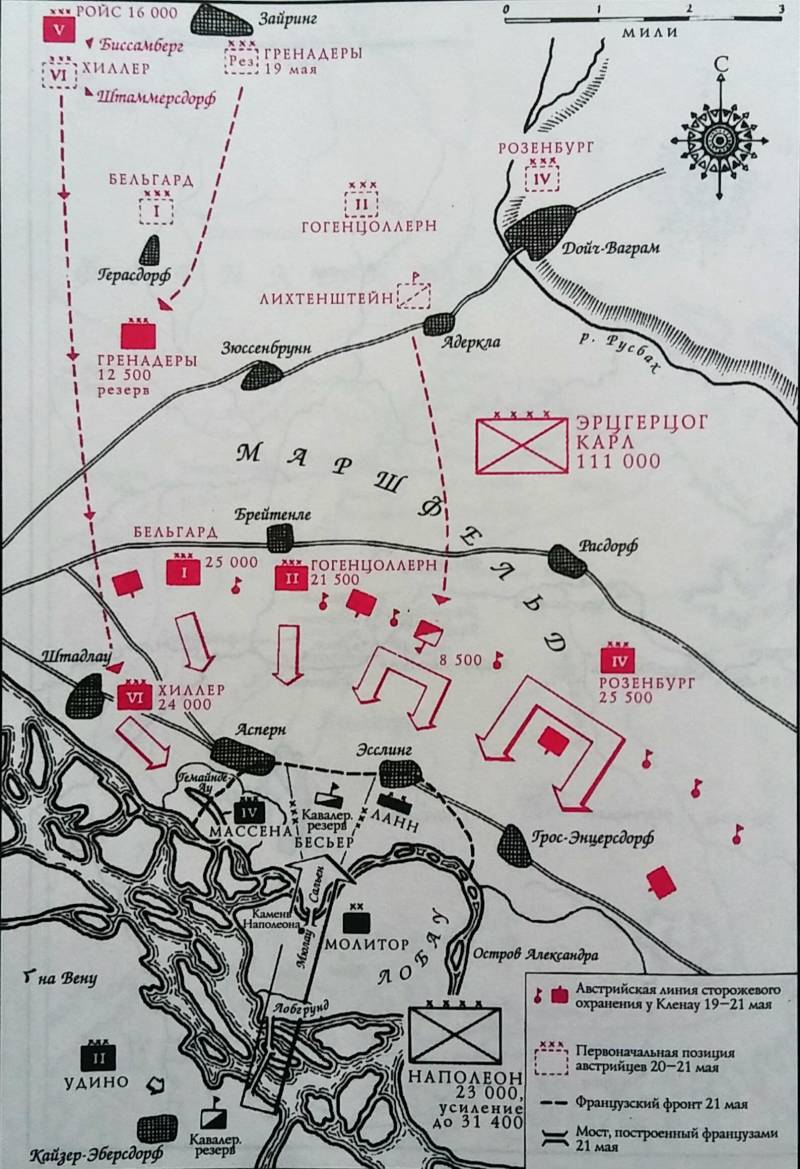
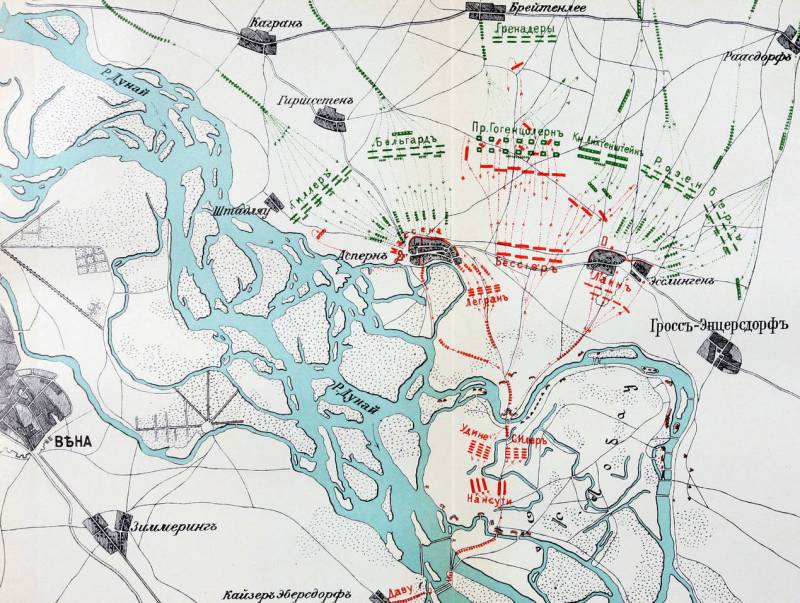
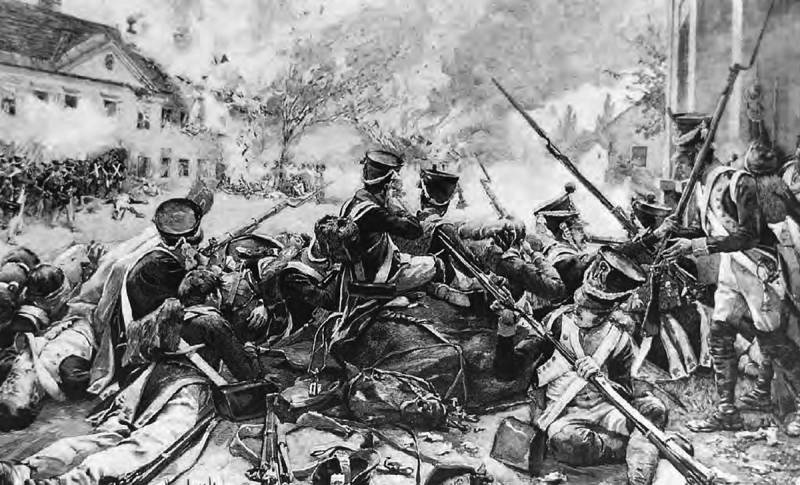
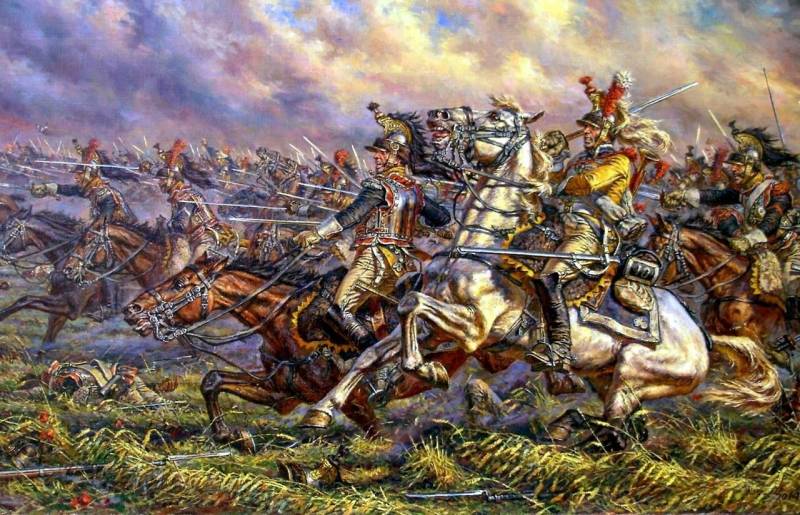
Information